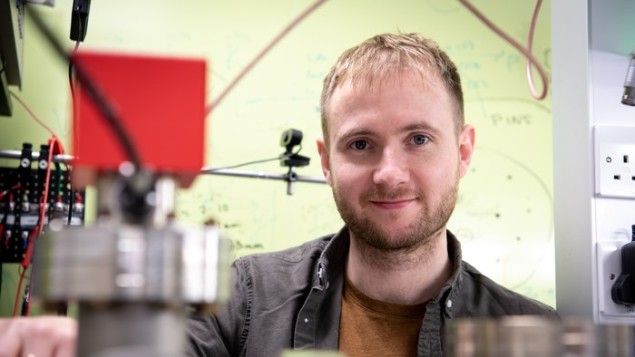
A scalable and flexible system for the remote monitoring of quantum experiments in noisy and unpredictable environments has been created by researchers in the UK. Thomas Barrett and colleagues at the University of Sussex used the latest sensing, machine learning and database technologies to create and maintain multiple quantum-related experiments involving ultracold atoms. Their approach could soon allow users to carry out, monitor and diagnose problems in advanced quantum experiments in hard-to-access environments – including on satellites.
As quantum technologies become more powerful and robust, they are starting to be used by non-specialists for practical sensing applications in a variety of environments. Much focus has recently been directed towards miniaturized, field-based quantum devices, which can be monitored remotely. Such devices are being developed as gravimeters and navigational accelerometers that exploit the unique quantum properties of ultracold atomic clouds.
Quantum systems are inherently sensitive to external factors such as heat, noise and electromagnetic radiation. Therefore, one of the main challenges for people creating practical quantum devices is how to keep them running in unpredictable environments. To mitigate against thermal disturbances and acoustic noise, components such as mirrors, coils and power supplies can be corrected actively. Yet in many cases, this can only be done after errors have occurred.
Active mitigation
Alongside advances in quantum technology, improvements to electronics and database software have all led to increasingly robust, versatile and modular systems for monitoring and manipulating experiments remotely. Using a combination of remote sensing, machine learning and human input, these systems allow users to collect data on key experimental parameters, diagnose unexpected behaviours and then actively mitigate problems before they occur.

Trapped ions share a wired connection
In their study, Barrett’s team extended this technology to monitor a variety of parameters necessary for maintaining several ultracold atom experiments using a shared laser system. These parameters included temperature, vacuum chamber pressure, laser beam power and magnetic field strength.
Within the system, sensors were networked together, and the data they collected were recorded in an external database – which could then be accessed through user dashboards. This way, the team showed that users could efficiently control multiple experiments at the same time, allowing them to mitigate any problems quickly and remotely.
Such capabilities are particularly crucial for maintaining quantum devices in harsh and inaccessible environments. This includes space-borne experiments on satellites and interplanetary probes. Since the system is both scalable and highly flexible, the team says it could also be extended to a diverse array of other applications. These include particle accelerators, sensor networks for monitoring glaciers, and remote teaching labs – which could even allow students to access quantum experiments remotely.
The system is described in Quantum Science and Technology.



